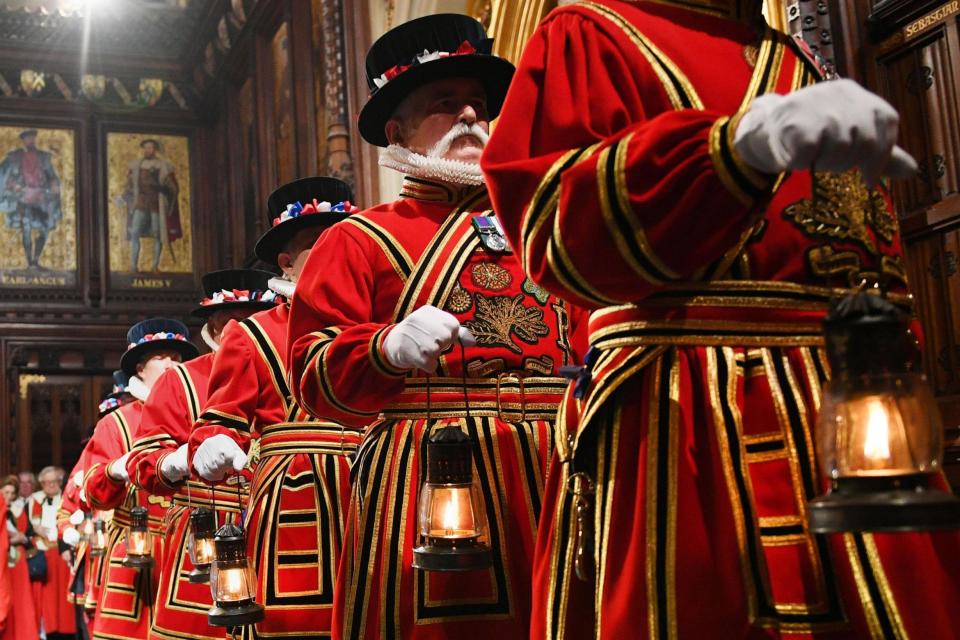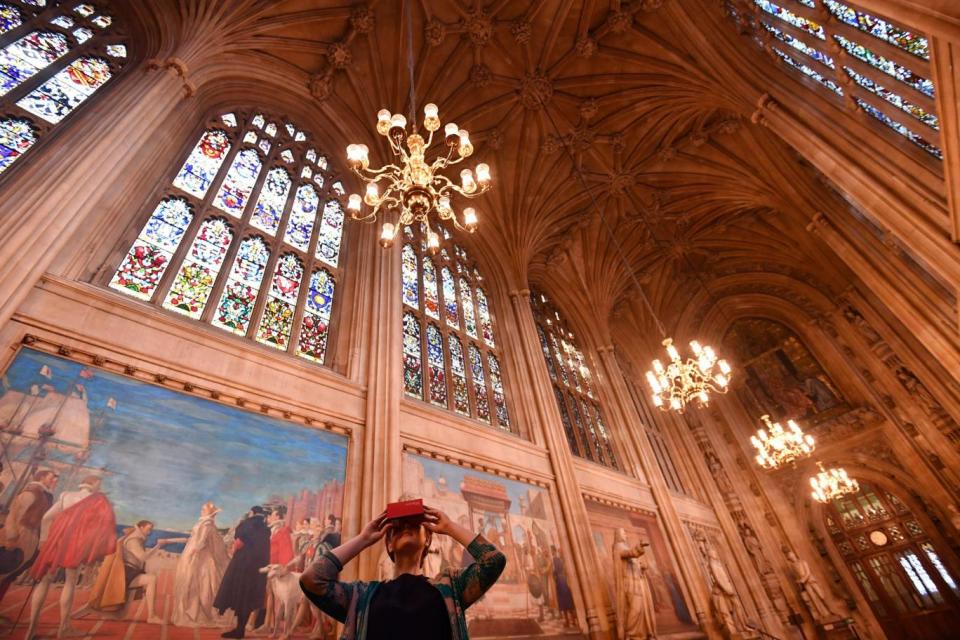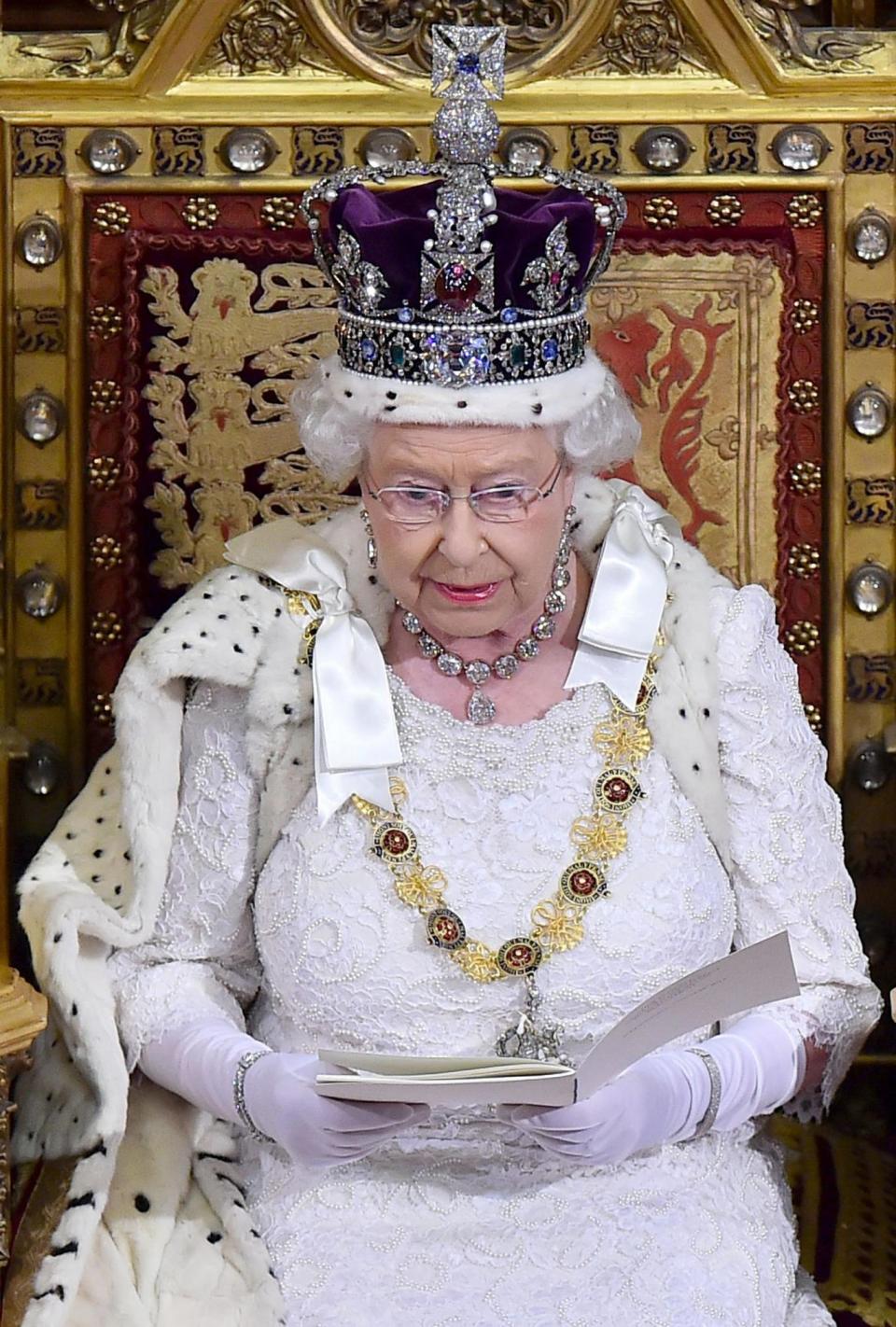The History of Parliament: 11 things you never knew about it

Raging fires, sieges and Brexit – it's safe to say our dear Palace of Westminster has been through a lot over the years.
Royal palace and home of the government, the beauteous thing you see before you now was designed and built collaboratively by Charles Barry and Augustus Pugin. Famous the world over, the building hardly needs any introduction at all. A symbol of politics and royal history, it's the finest example of the Gothic Revival-style in the world.
Covering an astonishing eight acres,1,100 rooms organised symmetrically over two courtyards spreading over 1,210,680 sq ft make up the entirety of the Parliamentary estate. Inside and out, the place boasts some incredible feats: 4,000 stained glass windows, hundreds of sculptures, thousands of heraldic shields, millions of tiles, and countless gothic chandeliers make up the entire mediaeval/Victorian fortress. It's even got its own post office, hair salon, rooftop, gym and pub, too.
We paid a visit and asked the fine people who work there to take us round and tell us 11 supremely interesting facts about the place. From a secret bathroom to illegal deaths, here's what you need to know.

It's much older than you think...
Most of the great big thing you now see straddling the Thames is Victorian, but Westminster Hall, which stands in the centre of the estate dates back hundreds of years. The original Palace of Westminster was commissioned by Edward the Confessor in 1045 to be the royal residence of the ruling monarch of England. Rebellions, plots and a few fires later, Westminster Hall still miraculously stands and claims the largest mediaeval roof in Europe.
The building has a very weird law...
It's actually illegal to die inside the Palace of Westminster. We're not too sure what the punishment is if you do actually die within its walls, but according to Parliamentary insiders, the law is in place for a very good reason. Anyone who does happen to kick it in the building, would be entitled to a State Funeral, so it survives to ensure the tax payer does not have to fork out for the local butchers regal wake.
Green has been a custom in the House of Commons for over 300 years...
It's not just in the Palace of Westminster, though. Everyone who has walked across Westminster Bridge (the crossing which leads to the Palace) will know that the iconic thing is laced in a shade of a light green. There's a reason for this - it's to mimic the colour of the benches in the House of Commons. Who knew?!
You can demand to enter the building whenever you like (sort, of)...
Us members of the public never need an appointment to lobby an MP. If Parliament is in session, simply go up to the gate, say you wish to meet or make an appointment to see your MP, pass through security, walk through Westminster and St Stephens Hall, and totter on to the desk and inform the receptionist of your request. Every member of both houses are obliged to contact you, for any query, no matter how big or small.
What many people don't know is that it's actually your constitutional right to enter the building whenever you like. Monday to Thursday, all visitors can just swan in and watch a debate in the public galleries of both the Lords and The Commons. Best time to go? Wednesdays for Prime Minster's Questions. You're basically guaranteed to see a good cat fight between May and Corbyn.
UK residents and overseas visitors can also go in and watch committees from both the Commons and the Lords whenever they are in session. Watch everything from government departments being scrutinised .to Lords select committees chatting on all things Europe, science and technology, economics, communications, international relations, and the UK constitution. It sounds boring, but when you're in there, quite a sexy thing to behold.
Superstition is writhe...
Every bonfire night, Yeomen wards (beefeater) still check underneath the House of Lords chamber just in case anyone decides to reenact the Gunpowder Plot. Once the coast is clear, they reward themselves with a drop of whisky. It's mostly ceremonial, but you can't be too careful, right?

The Lobby Grilles are cooler than you think...
In the windows surrounding the central lobby of the palace (the big room you see on the telly) you'll notice some very large metal grilles. They were originally built to cover the windows in the Ladies' Gallery in the House of Commons so that MPs were not distracted by the sight of their female counterparts as they worked. As you can imagine, the suffragettes were not at all happy about this, and specifically targeted the Ladies' Gallery throughout the early part of the 20th century.
In 1908, two suffragettes chained themselves to one of the grilles in protest screaming 'we have listened behind this insulting grille too long!'. After hours of campaigning, the grille was eventually removed so that the women could be cut free in the committee room. The grilles were permanently removed from the gallery and placed in the central lobby following a vote in the House of Commons in August 1917.
Since then, they have become a very powerful symbol of the exclusion of women from Parliament.
The word lobby comes from Parliament...
This one's for all you geeky linguists out there. The word lobby dates all the way back to the 16th century meaning covered walk, as in traversing a monastic cloister. It's verb use, however, is far more fascinating. In the UK, 'lobby' refers to each of the corridors in the Houses of Parliament to which MPs retire to vote, as well as to the several large halls in which members of both houses meet members of the public. It's third use, also refers to lobby correspondents - i.e those journalists you see lobbying politicians to get their scoop. It's all a tad confusing, but in a nutshell, a word wrapped up into the workings of the UK constitution is pretty cool.
It's on an island...
Like it's UNESCO-neighbour Westminster Abbey, the entire Parliamentary estate is built on an island. For those who walk through and visit, it's strange to think that Parliament and the surrounding area used to be separated from the rest of the capital. 1,000 years ago, the area used to go by the name of Thorney Island. Unbeknown to many, Westminster (where the Palace sits) actually gets its name from the Abbey, which originally used to be called West Minster. Today, Parliament still fully occupies the island's plateau. Mind blown.

The Queen has a super secret toilet...
If you ever go on a tour, chances are (unless it's in use) you'll have a glimpse of the Royal Gallery. It's in here where The Queen pops on her crown and her robes of State before she officially opens Parliament (AKA the State Opening). As you go into the room, concentrate on the wooded panelling to the right and you'll see a little door knob. That's her bathroom. Only she and special staff are permitted to enter. We asked to go in, but sadly, our guides said nope.
Speaking of the Queen, she actually owns it...
The palace is owned by all reigning monarchs in right of the crown and for all ceremonial purposes. It's because of this, that the entire building retains its status as an official royal residence – hence the name, the Palace of Westminster.
There's a flat inside..
It's one of most coveted addresses in the land, and parliament's speaker gets to call the place home. Luckily for current speaker John Bercow, he and his family live rent free in a lush palatial apartment overlooking the Thames. Rent-free and bill free? Where do we apply?
Want more London facts? Here's five fascinating things you never knew about Buckingham Palace!

 Yahoo News
Yahoo News 